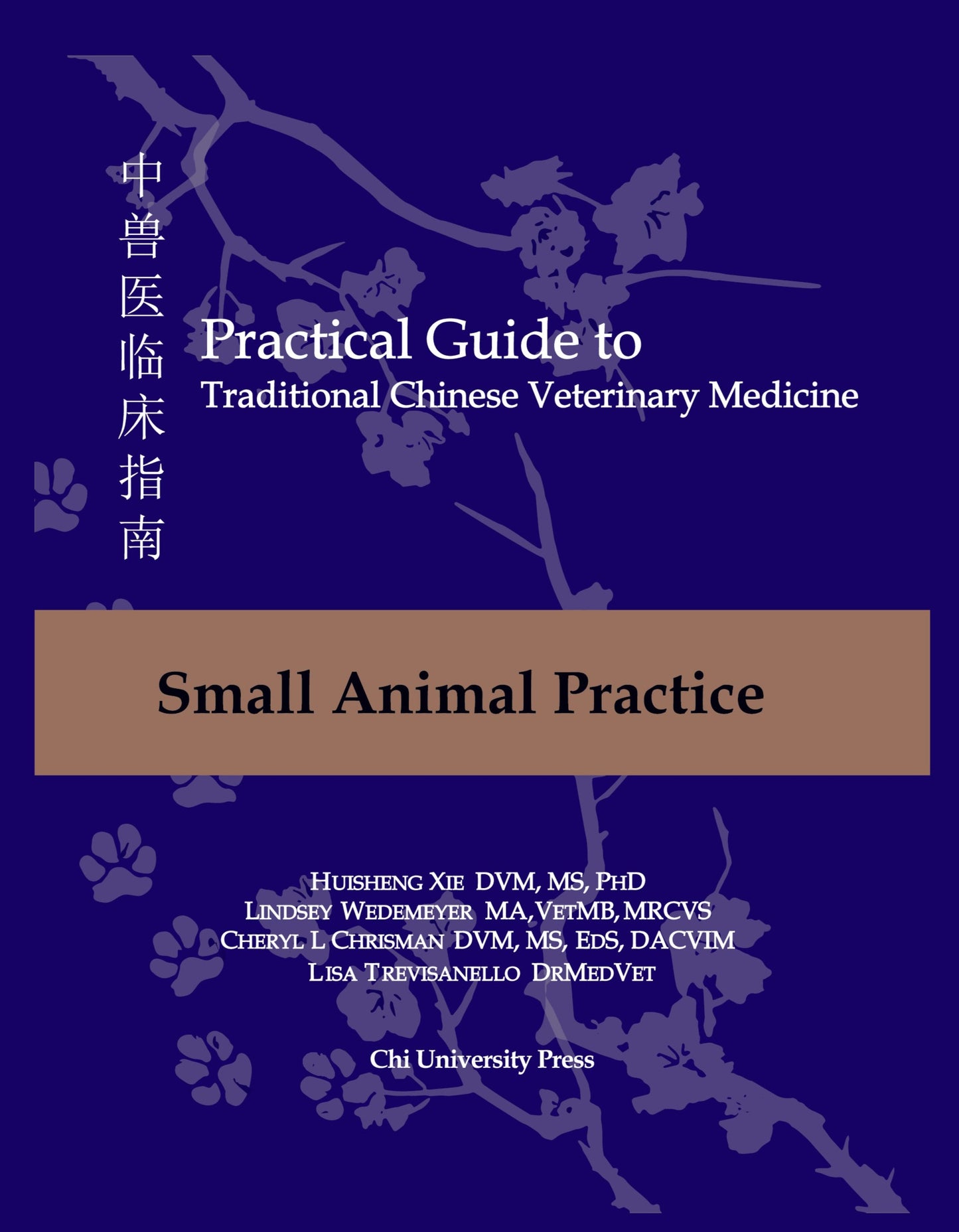Practical Guide to TCVM, Vol. 2: Small Animal Practice (BX14)
Practical Guide to TCVM, Vol. 2: Small Animal Practice (BX14)
Couldn't load pickup availability
1001 pages, hardcover.
Please click here to download the list of content.
The successful practice of Traditional Chinese Veterinary Medicine (TCVM), as with any form of medicine, depends on having a clear understanding of both theoretical principles and practical techniques. The mindset required to understand TCVM is very different from that used in conventional medicine, and this can often make the transition to TCVM difficult for Western-trained practitioners.
With the ever-increasing interest in TCVM, there is a broad selection of books both ancient and modern on Chinese medical theory, acupuncture, herbal medicine, Food Therapy, Tui-na and lifestyle/exercise modification. Busy practitioners rarely have the time to search several books for clinically relevant information needed to design a comprehensive treatment protocol for each individual patient. It is also hard to find information on the TCVM treatment of species that have not traditionally been treated with TCVM.
There is a Chinese proverb that states: “Reading ten thousand books is not as useful as traveling ten thousand miles.” In other words, experience is worth more than theory. The aim of Practical Guide to TCVM is to provide a single, comprehensive resource for veterinary acupuncture, Chinese herbal medicine, Food Therapy, Tui-na and lifestyle modification for treatment of the most common disorders seen in modern clinical practice. By succinctly conveying the knowledge of expert practitioners, this text can be used as a quick reference in clinical settings, so practitioners can easily establish a treatment plan and gain valuable clinical experience.
This project began in February 2007 with an initial plan of 38 chapters in a single volume. Over time, more chapters were added, with 45 different authors now having contributed information on TCVM treatment of dogs, cats, horses, birds, snakes, camelids, elephants, dolphins and other species. Since the project began, the authors and editors have invested countless hours collating information, summarizing knowledge gained from years of clinical experience, and revising and clarifying the text to prepare it for publication. The completed text has become so large that the editors have decided to publish it in 4 volumes for easier reference and clinical use.
This is the second of 4 volumes of Practical TCVM and describes the diagnosis and treatment of Small Animal Diseases. The first volume Practical Guide to Traditional Chinese Veterinary Medicine-EMERGENCIES AND FIVE ELEMENT SYNDROMES was published in January 2014. Two subsequent volumes will cover TCVM for equines (14 chapters) and exotic species (13 chapters), respectively. Each chapter of these volumes presents the complete TCVM treatment of disorders commonly seen in clinical practice.
In this volume, the most common TCVM Patterns for each conventional medical diagnosis in dogs and cats are discussed. For each Pattern, the etiology, clinical signs and treatment with acupuncture, Chinese herbal medicine, Tui-na, Food Therapy and lifestyle modification are described. Finally, each chapter includes case examples to illustrate the treatments that have been described, and provide information on the success of the treatment.
Throughout this volume will be abbreviations indicating the different types of acupuncture as follows:
DN Dry needle acupuncture
EA Electro-acupuncture
Aqua-AP Aqua-puncture
It is the hope of the authors and editors that this format will provide a quick and easy guide to the TCVM treatment of conditions most commonly seen in small animal clinical practice. We also hope that these volumes will make the clinical application of TCVM less overwhelming for the new TCVM practitioner. Furthermore, we hope that these books will inspire more veterinarians to practice TCVM and gain the confidence and wisdom that comes from personal experiences with the effectiveness of this unique paradigm of medicine.
We sincerely appreciate the team of chapter authors, Drs. Patricia A Perkins, Cheryl Chrisman, David Hirsch, Greg Todd, Min Su Kim and Vicki Farthing, Deborah Mathis, Keum Hwa Choi, Pat Jordan, Lindsey Wedemeyer, Madeline Yamate, Signe Beebe, Sue Roberts Swaney, Heidi Mier, Connie DiNatale, Jenny Liu and Ashley Paper for their knowledge and expertise. Without their contributions, this book would be impossible. Our special thanks go to the peer reviewers Drs. Xiaoyuan Wei and Xuemei Cui who have illustrated and laid out the entire book. We would also like to thank the proofreaders Drs. Mary Foster Rodriguez, Linda Boggie, Geraldine Diethelm , Betsy Hershey, Cindy Lankenau, Wendy Wallace and Mr. Arick Josh Howard. Your contributions help make this book a pleasure to read.
August 1st, 2014
Huisheng Xie DVM, MS, PhD
Lindsey Wedemeyer MA, VetMB, MRCVS
Cheryl L Chrisman DVM, MS, EdS, DACVIM-Neurology
Lisa Trevisanello DrMedVet
Share


